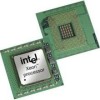Intel BX80605X3430 Data Sheet - Page 55
JTAG/ITP Signals
 |
UPC - 735858210331
View all Intel BX80605X3430 manuals
Add to My Manuals
Save this manual to your list of manuals |
Page 55 highlights
Signal Description 6.8 JTAG/ITP Signals Table 6-10. JTAG/ITP Signal Name BPM#[7:0] DBR# PRDY# PREQ# TCK TDI TDI_M TDO TDO_M TMS TRST# Description Breakpoint and Performance Monitor Signals: Outputs from the processor that indicate the status of breakpoints and programmable counters used for monitoring processor performance. DBR# is used only in systems where no debug port is implemented on the system board. DBR# is used by a debug port interposer so that an in-target probe can drive system reset. PRDY# is a processor output used by debug tools to determine processor debug readiness. PREQ# is used by debug tools to request debug operation of the processor. TCK (Test Clock) provides the clock input for the processor Test Bus (also known as the Test Access Port). TDI (Test Data In) transfers serial test data into the processor. TDI provides the serial input needed for JTAG specification support. TDI_M (Test Data In) transfers serial test data into the processor. TDI_M provides the serial input needed for JTAG specification support. TDO (Test Data Out) transfers serial test data out of the processor. TDO provides the serial output needed for JTAG specification support. TDO_M (Test Data Out) transfers serial test data out of the processor. TDO_M provides the serial output needed for JTAG specification support. TMS (Test Mode Select) is a JTAG specification support signal used by debug tools. TRST# (Test Reset) resets the Test Access Port (TAP) logic. TRST# must be driven low during power on Reset. Direction I/O O O I I I I O O I I Type GTL Asynch GTL Asynch GTL TAP TAP TAP TAP TAP TAP TAP Datasheet, Volume 1 55















